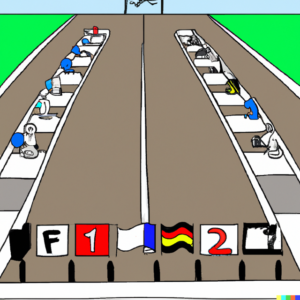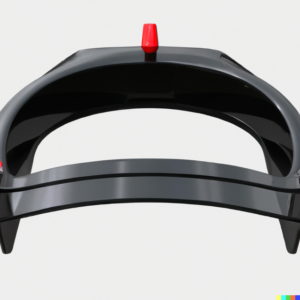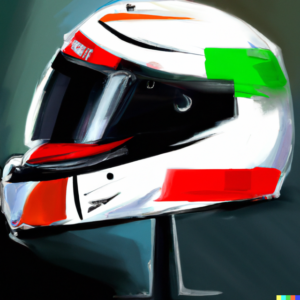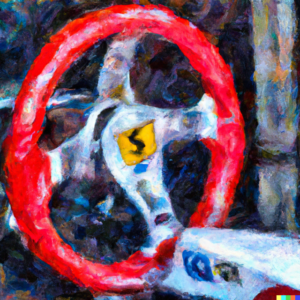Beginners Guide To F1
Formula 1 is an entertaining motorsport enjoyed by millions around the globe. New arrivals to the sport may initially be confused by the terminology, teams, and drivers – and how each race weekend works.
We have compiled the ultimate beginner’s guide to the fastest and most entertaining motorsport ever, and you will have a favorite for the world driver’s champion in no time!
What Is F1?
Formula 1 is an annual series of motor races held in various countries around the globe. The cars that compete in these races are the fastest single-seater, open cabin, four-wheel vehicles in the world (although once there was a six-wheeler!)
But why is it called Formula 1? “Formula” refers to the rules and standards that the teams (called the constructors), mechanics, and drivers must adhere to while participating in the sport.
When motorsports first emerged, no hard and fast rules or limitations governed the cars’ power, size, and speed. Constructors with more money could build stronger cars, which became dangerous, with many drivers being fatally injured.
After a brief hiatus during WWII, the governing body of Formula 1, the Federation Internationale de l’Automible (FIA), implemented limitations on the power and size of cars to establish an equal and fair race. This was the “Formula” that the cars had to obey.
The “One” refers to the racing track’s grading, cars, and drivers’ licenses. It is also used to separate F1 from other motor races and indicates that it is the top race for formula racing (as there are also F2 and F3 race events).
Brief History Of F1
Formula One arrived on the motorsports scene at the European Championship of Grand Prix motor racing.
With the birth of Formula One after World War II, new stringent rules were implemented in 1946 that governed the power and size of the cars.
World Championship Races
The first race after the war was a non-championship race held in 1946 in Italy, known as the Turin Grand Prix.
The first World Championship Grand Prix occurred at Silverstone, UK, in 1950. That year the title of World Champ went to Guiseppe Farina from Italy, who drove for Alfa Romeo. Farina’s teammate, Juan Manual Fangio, just missed out on this title.
But, this was not the end for Fangio, who went on to win the world championship title in 1951 and 1954-1957. He held on to a record of five titles for 45 years until Micheal Schumacher stole the record from him with his sixth win in 2003.
Constructors Championship
The Constructors Championship only came onto the F1 scene in 1958 and is awarded to the team who scored the most points.
But who or what is a constructor? According to the FIA: “the constructor of an engine or chassis is the person (including any corporate or unincorporated body) which owns the intellectual rights to such engine or chassis.”
Evolving rules
Over the years, the Formula One Grand Prix rules have seen a lot of changes. The changes in the rules aim to protect drivers while still ensuring an entertaining spectator sport.
F1 Cars
To understand F1, you have to understand the cars.
These cars are incredibly technical and are modern engineering marvels, with a lot of time, energy, and money going into their design and construction.
The cars today differ vastly from the very first Formula One vehicles. Today, the cars are safer (especially due to the addition of the “halo” over the driver’s seat), easier to maneuver, and much faster. See how much Formula 1 cars cost and how they are different from Indy Cars.
Designs
F1 cars have been designed to reach astounding speeds. This is not just because of their power but also because of the cars’ aerodynamics.
Formula 1 cars can achieve their top speed of 208 mph due to the little wind resistance, downforce that keeps the car close to the track, and many little tweaks that reduce drag. Without this downforce created by the cars’ designs, the drivers would have no control over the car (not to mention the car might lift off!).
These modern cars produce 5G of downforce, which allows for better tire traction to prevent sliding into corners, ensuring drivers can crest the apex of the corners at speeds exceeding 75 mph.
Engines
The current cars are all hybrid cars. The entire system used to provide power to the vehicle is called the power train or power unit.
The power train consists of a V6 internal combustion engine, a Motor Generator Unit-Heat (MGU-H), a Motor Generator Unit-Kinetic (MGU-K), a turbocharger, Control Electronics, and an Energy Store.
The MGU-H stores heat from the exhaust, which can be reused. The MGU-K stores heat energy from the brakes for reuse. This heat is stored in the Energy Store, similar to a battery.
This extra heat energy can then give the vehicle an extra electric power boost through the Kinetic Energy Recovery System.
Tires
Pirelli is the official tire supplier for Formula One and supplies different tire compounds (soft, medium, hard, intermediates, and wet) for the races. Tire ratings range from C1 to C5 (excluding the intermediate and the wet tires), with C1 being the softest and C5 the hardest.
As the tires do not last for the entire race, drivers get called into the pit lane to replace their tires.
F1 Teams
The drivers in F1 are not racing for themselves but rather representing a team. Each F1 team consists of hundreds of engineers and staff members.
Currently, ten teams participate in Formula One, competing for the Constructors Cup. Each team has two drivers and two cars in each race. Find out how F1 teams make money.
Here is a list of the 2022 teams:
- Red Bull Racing
- Ferrari
- Mercedes
- Alpine
- McLaren
- Alfa Romeo
- Haas F1 Team
- AlphaTauri
- Aston Martin
- Williams
F1 Drivers
Top athletes
Formula 1 drivers are top athletes in the sports world.
Drivers have to withstand incredible G-forces during the race. When accelerating, drivers experience around 2G, while they can experience up to 6G around a corner. No matter the G-force, drivers must maneuver the car, work the pedals, and concentrate on where they are going, plus they have to be able to hold their pee while doing so. See the heights and weights of all current F1 drivers.
Driving in a team
Each of the F1 teams has two main drivers, as well as a team of reserve and test drivers.
Although the two main drivers are considered teammates, they are also competitors. Although racing against the other teams, the drivers will also try to beat their teammates. This has had some catastrophic results, with teammates colliding with each other.
Teammates can also work together, such as providing one another with a tow or the second teammate defending from other cars behind.
2022 Drivers
Here are the current 2022 drivers and their teams:
- Red Bull Racing: Max Verstappen & Sergio Perez
- Ferarri: Charles LeClerc & Carlos Sainz
- Mercedes: Lewis Hamilton & George Russell
- Apline: Estaban Ocon & Fernando Alonso
- McLaren: Lando Norris & Daniel Ricciardo
- Alfa Romeo: Valterri Bottas & Zhou Guanyu
- Haas: Kevin Magnussen & Mick Schumacher
- AlphaTauri: Pierre Gasly & Yuki Tsunoda
- Aston Martin: Lance Stroll & Sebastian Vettel
- Williams: Alexander Albon & Nicholas Latifi
F1 Circuits/Tracks
A Formula One circuit is a race track approved by the FIA and can be used for F1 racing, such as the new Las Vegas F1 Track.
Usually, the circuit will start with a straight section where the starting grid is, followed by turns, corners, and other straight sections.
Most F1 tracks run clockwise, although there are a couple of anticlockwise tracks.
On average, a race can take about 2 hours to complete, with a distance of 190 miles driven around the track. But, this average distance does differ between different tracks.
Pit Stops
Pit stops are important stops the cars make during the race to change the tires, make any repairs, serve a time penalty, or make minor adjustments.
The pit lane is next to the racing lane, behind the pit wall, and each garage is assigned where the team ranks in the constructor’s championship.
The team communicates with the driver via radio. Together, they determine whether the car must come into the pit lane for a tire change, mechanical adjustments, or repairs after a collision.
F1 Season
An F1 season consists of several Grand Prix races over the year. Typically the F1 season runs from March to December, with a couple of weekends without races during the summer break.
The 2022 season consists of 23 races at 23 different venues.
At the end of the season, the World Drivers Championship and the Constructors Championship winners are announced based on the points accumulated by drivers and teams, respectively.
Popular F1 Slang Terms And Definitions
Now that you understand the basics of F1, it is time to understand the jargon that the commentators use during the race.
Backmarker
What it is: The drivers at the back of the field, who often get overlapped by the winning cars.
How to use it: “The backmarkers are causing traffic and slowing race for the leaders.”
Blistering/Graining
What it is:
Blistering: When the track is cold and tires are hot, bubbles form on the tire due to bits of a tire exploding out.
Graining: When the track is hot, and the tires are cold, bits of rubber come off the tire and stick to it.
How to use it: “We struggled to manage our tire temperatures, which caused blistering/graining.”
Bottoming Out
What it is: This occurs when the car’s underside hits the track surface. You can often see this as a shower of sparks appearing behind the car as the titanium skid blocks underneath the car grind on the track.
How to use it: “I lost some time since the car was bottoming out on the straight.”
Box
What it is: “Box” is a term used by the team in the pit to tell the driver to come in for a pit stop. It comes from the German Boxenstopp, which means pit stop.
How to use it: Over the driver’s radio:“Box this lap, box box.”
Dirty Air/Clean Air
What it is:
Dirty air: This is turbulent air behind a car that can affect the car behind it. This reduces the downforce of the car behind.
Clean air: This is when a car is alone with no cars in front of it, allowing clean, undisturbed air to pass over the wings, allowing proper downforce and increased speed.
How to use it: “I was driving in clean air, but after the pit stop, I got stuck behind Hamilton and had to drive in his dirty air”
DRS
What it is: The Drag Reduction System (DRS) is a flap on the rear wing that can lift, which reduces the drag on the car, allowing for increased speed. There are certain DRS sections on the track where drivers can use this to their advantage. It significantly increases the chance of overtaking and can only be used when a car is one second behind another.
How to use it: “Verstappen got DRS because he caught up to within one second of the backmarkers.” See our detailed article on what is DRS.
Flat spot
What it is: When a driver accidentally locks the brakes, the tire will stop spinning and skid along the track, which will cause a flat spot on the tire.
How to use it: “I had a lockup and had to go into the pits to change out my tires because of a flat spot.”
Marbles
What it is: Marbles are the small bits of rubber left on the track as the race continues. They are next to the driving line and can cause a loss of grip for drivers.
How to use it: “Be careful around turn five as there are lots of marbles there.”
Oversteer/Understeer
What it is: When a car goes into a corner, the rear wheels (oversteer) or front wheels (understeer) can lose traction, causing the driver not to make the turn as planned. This can cause the car’s rear to slide out or cause the driver to make a shallow turn.
How to use it: “The car was oversteering/understeering in turn 7.”
Polesitter
What it is: The driver who qualified first in Qualifying 3 (Q3) and who begins the race at the start (also known as “pole position”).
How to use it: “Polesitter Carlos Sainz has had an amazing start and stays in the lead.”
Porpoising
What it is: A recent term from the 2022 season, Porpoising, referring to when the car gets sucked down to the floor due to downforce, but then the airflow stalls, causing the car to jump back up until airflow begins again, forcing the car down. It mimics a porpoise jumping through the waves.
How to use it: “Lewis Hamilton would’ve set the fastest lap if it wasn’t for the porpoising.”
Undercut
What it is: When a driver is stuck behind another car, they can pit early to get an advantage from fresher tires, which will place them ahead of their competitor once the competitor pits.
How to use it: “We suspect Ferarri will use the undercut to get ahead of Red Bull.”
Race Format
A Grand Prix weekend consists of three days of racing – from Friday to Sunday (except for Monaco, where the free practice is on a Thursday).
Friday and Saturday: Free Practice Sessions
Free Practice 1 and 2 usually happen on a Friday, with Free Practice 3 occurring Saturday morning.
The purpose of Free Practice is to allow drivers become familiar with the track and make any mechanical changes to the cars. Drivers will test out the different tire compounds, monitor fuel use, and make small changes to the engines and aerodynamics.
Saturday: Qualifying
Qualifying consists of three sessions – Q1, Q2, and Q3. During these sessions, drivers aim to get good lap times and a good position on the starting grid. See our detailed guide on how qualifying works in F1.
Drivers do not race against each other during Qualifying but rather against the clock.
Qualifying 1
All 20 drivers have 18 minutes to try and set as fast a lap time as possible. The five slowest drivers (positions 16 to 20) will not make it to Q2.
Qualifying 2
15 cars will set out in Q2 and try to get the fastest time. They have 15 minutes to go around the track and try to get a competitive time. Only ten drivers will go on to Q1.
Qualifying 1
Q1 is only 12 minutes long, and the ten remaining cars will go all out to set the fastest lap times. The winner of Q1 will begin in pole position – meaning he will be at the front of the starting grid for the race.
Saturday: The Sprint
Sprint races do not occur every weekend. There were three in 2021, and three are scheduled for 2022.
The F1 Sprint was introduced in 2021, and a Sprint weekend follows a slightly different format.
The qualifying session will determine the start of the Sprint – a 62-mile dash on the Saturday. The winner of the Sprint will score Championship points and will also be awarded pole position for the race on Sunday.
Sunday: The Race
Once the grid has been determined, it is time to race!
Before the race begins, the cars will drive a formation lap and park in their grid positions. At the start of the grid is a set of lights. These lights light up, and once it’s lights out, it is time to race!
The race is exciting, with yellow flags, red flags, or a safety car sometimes making an appearance.





